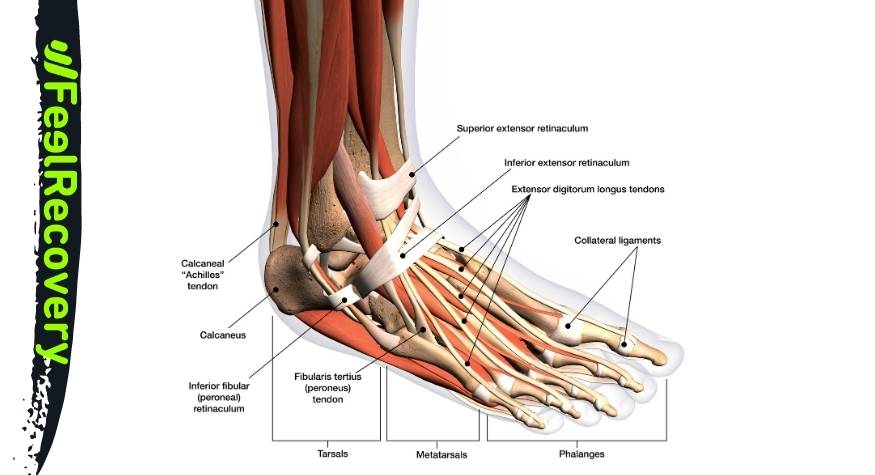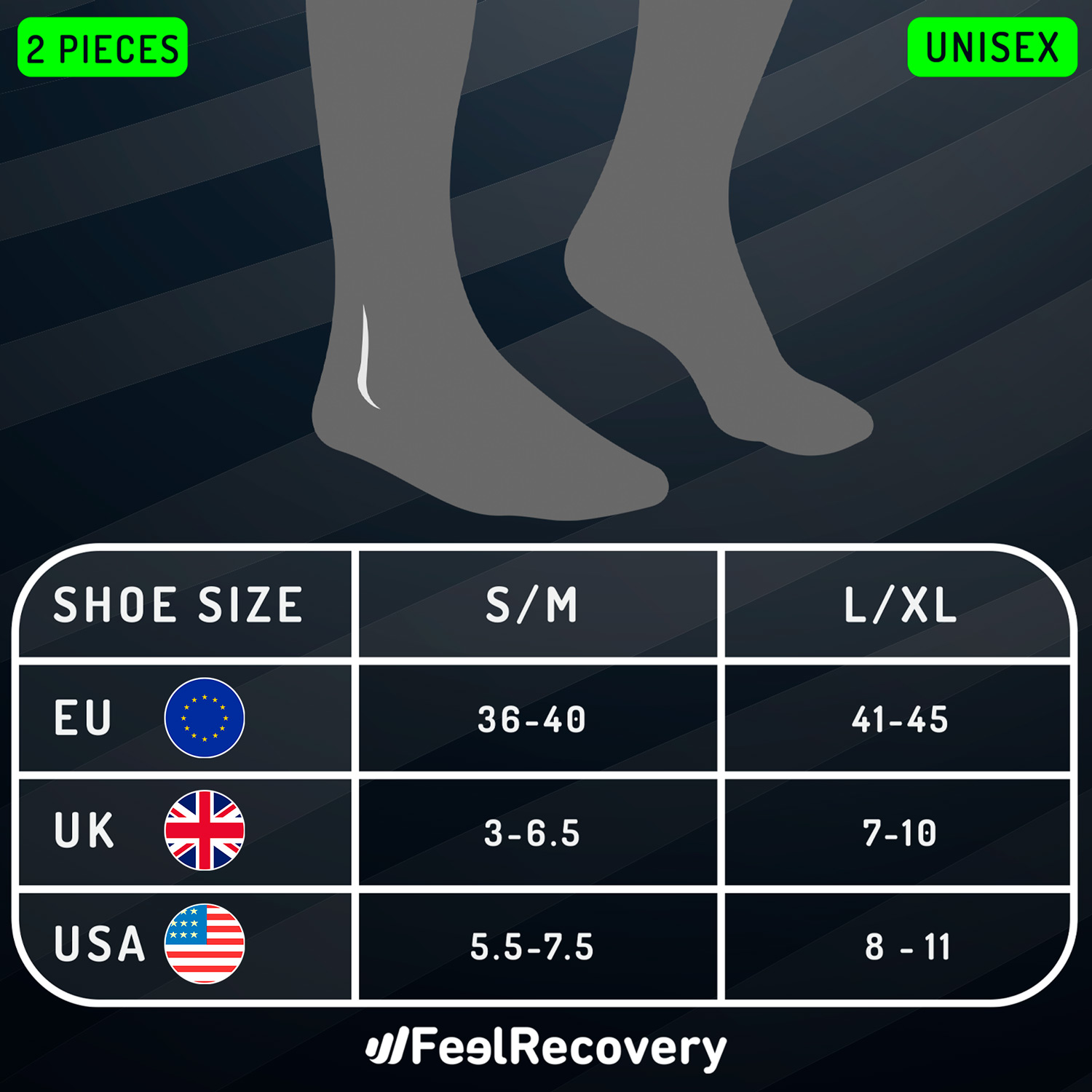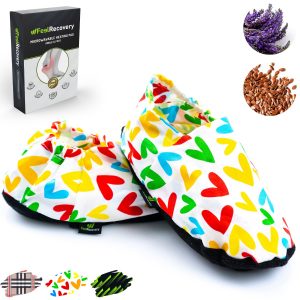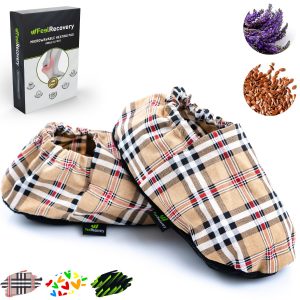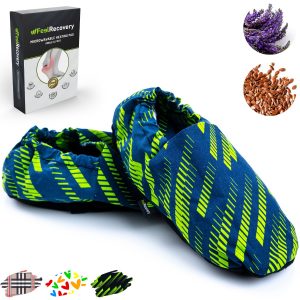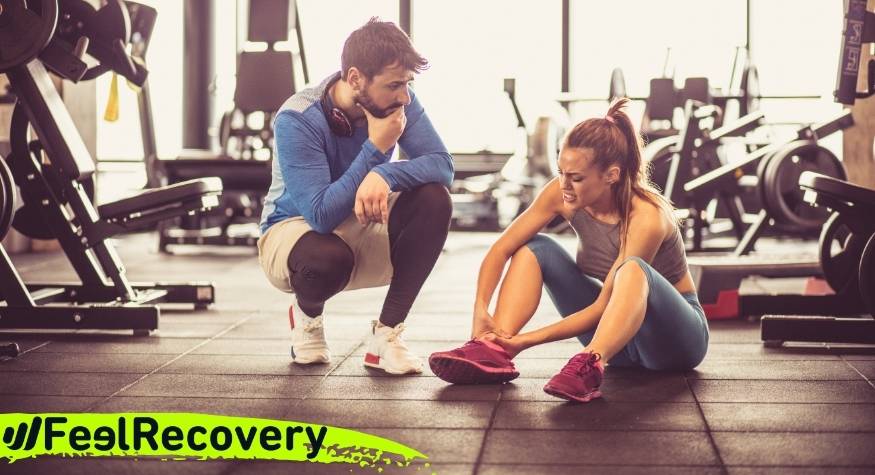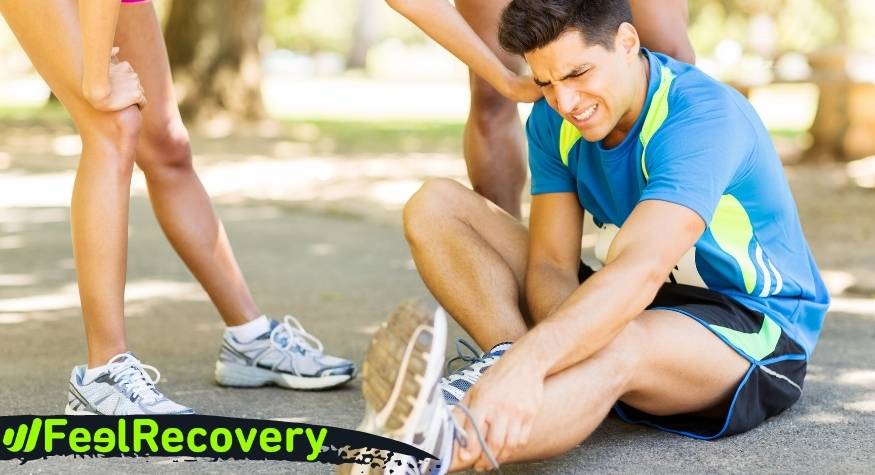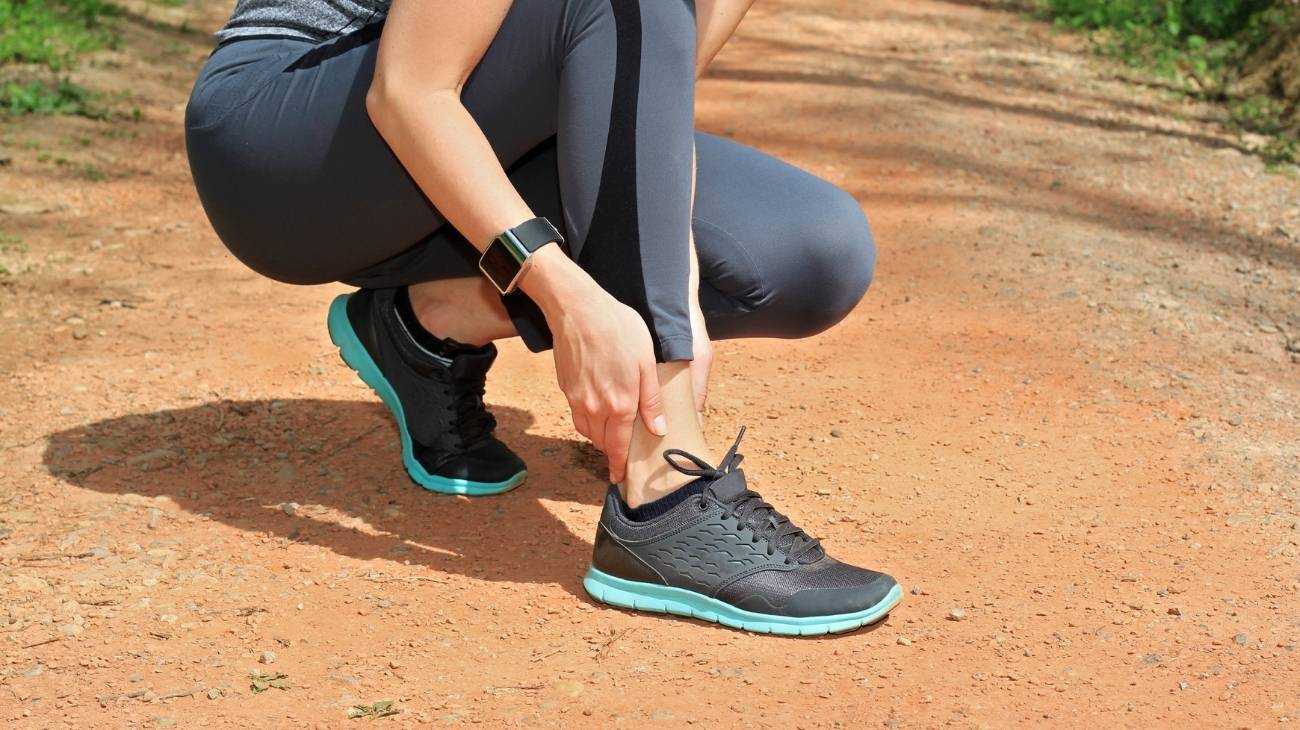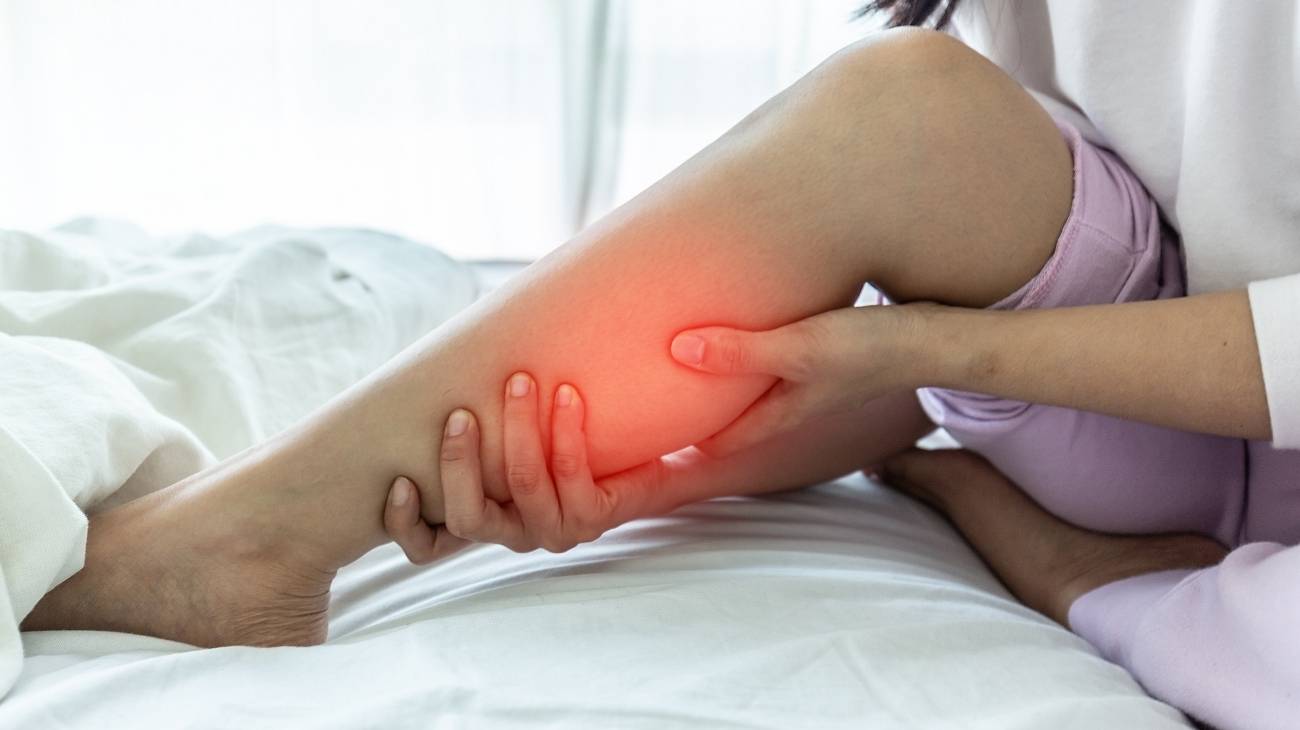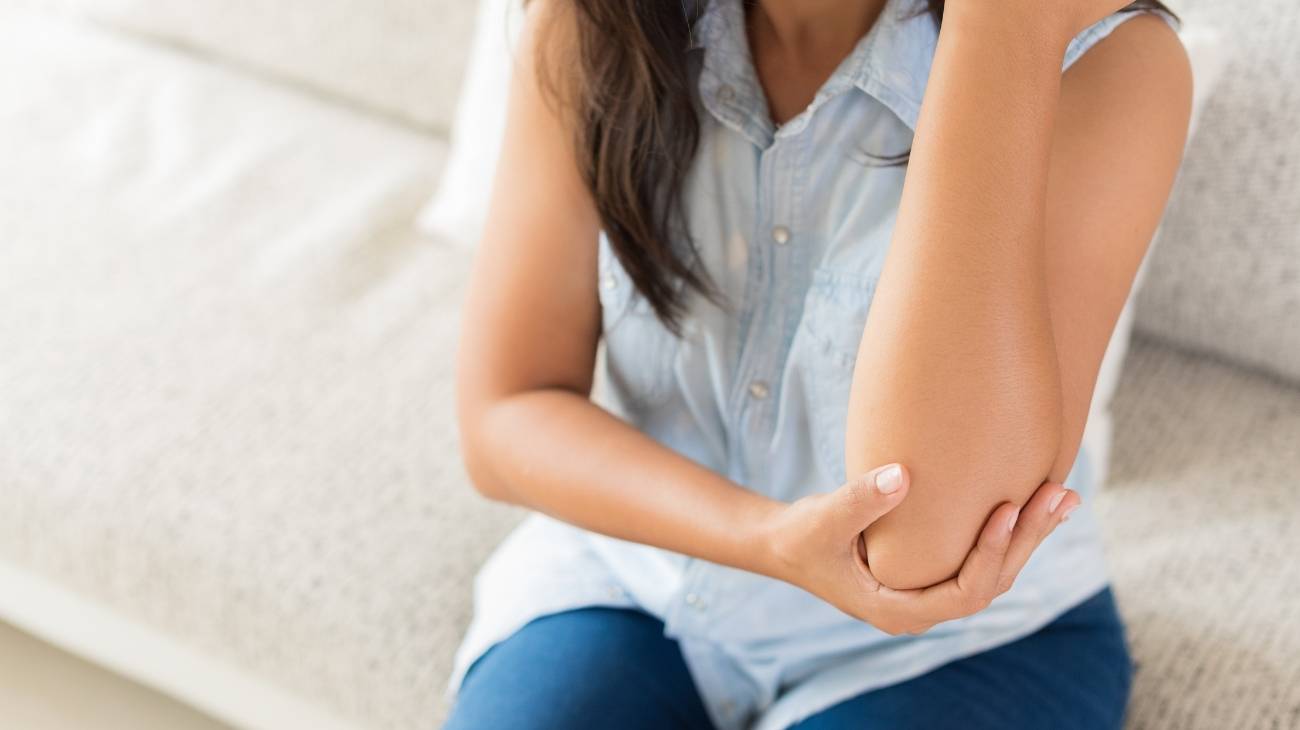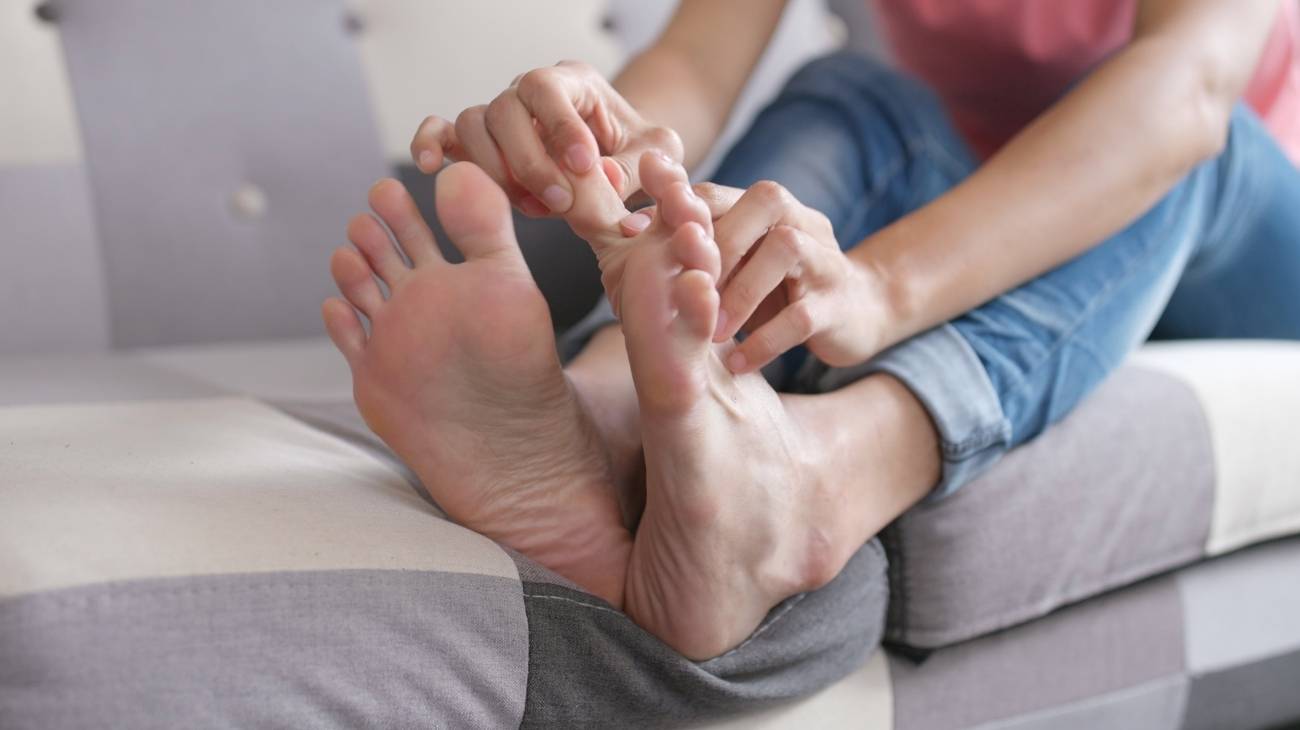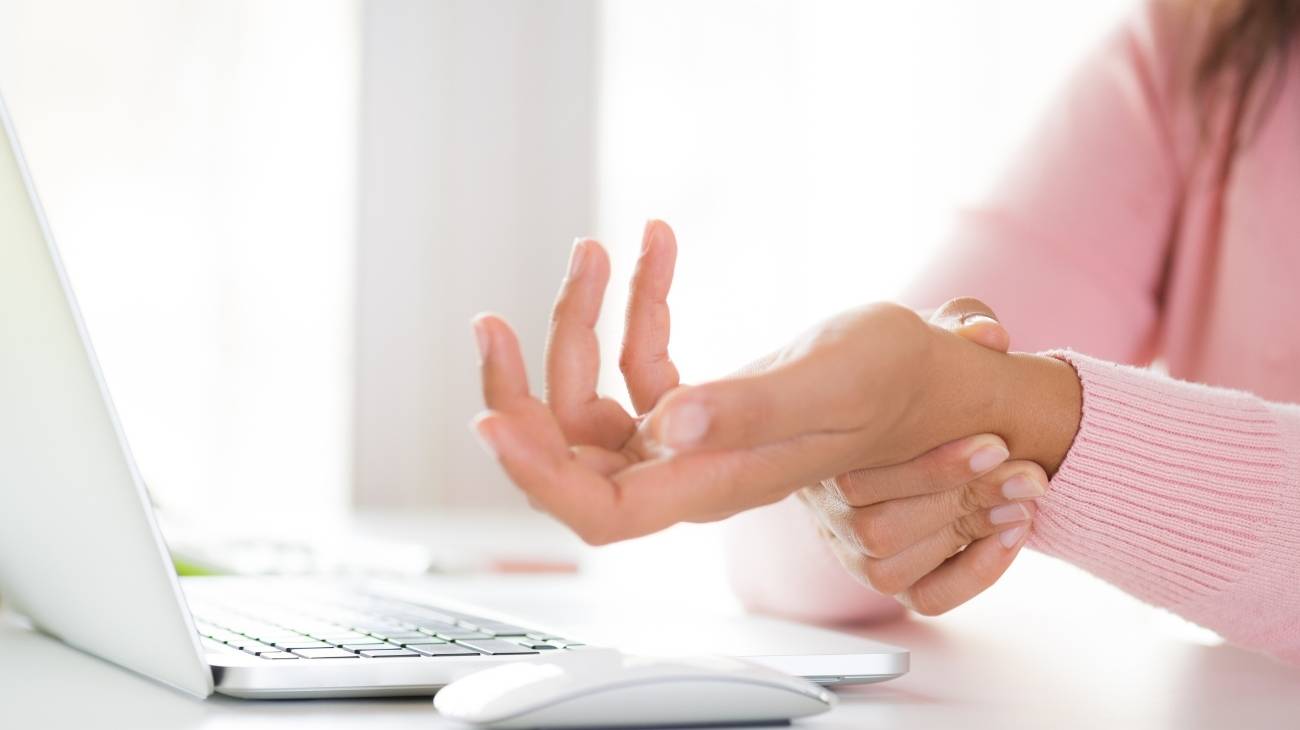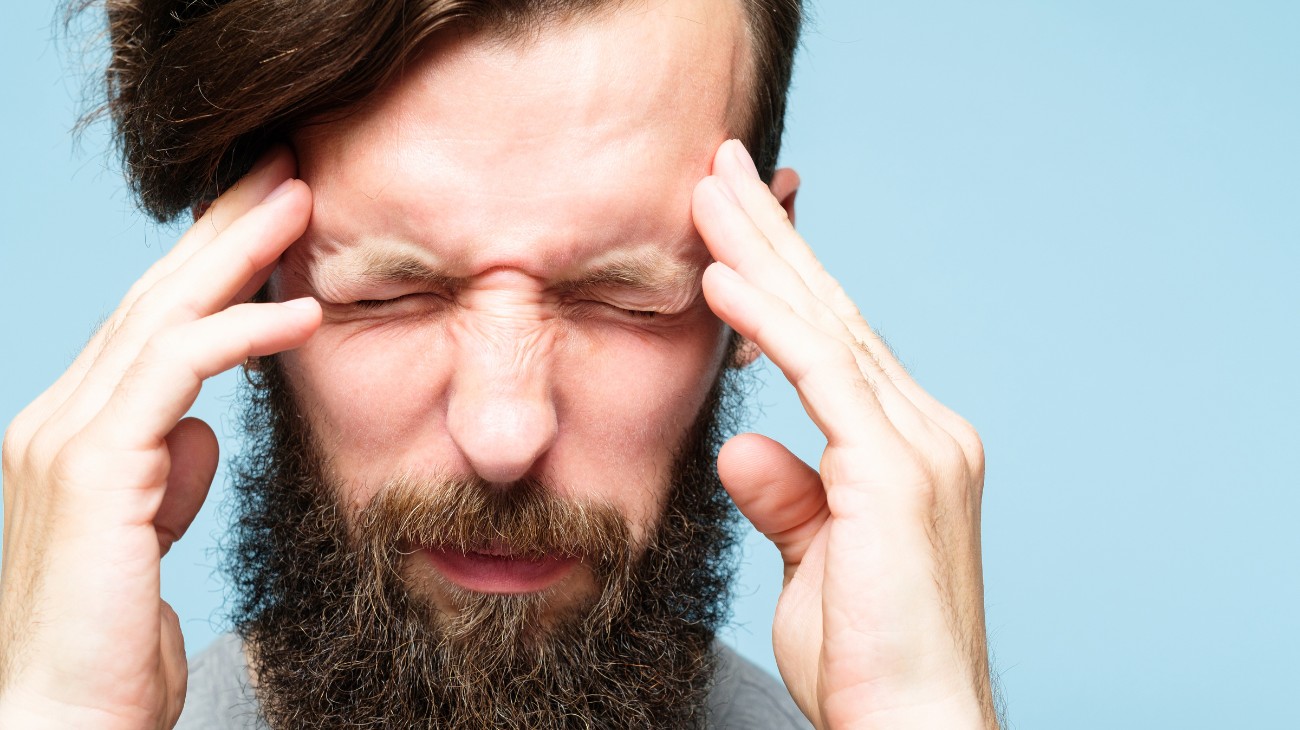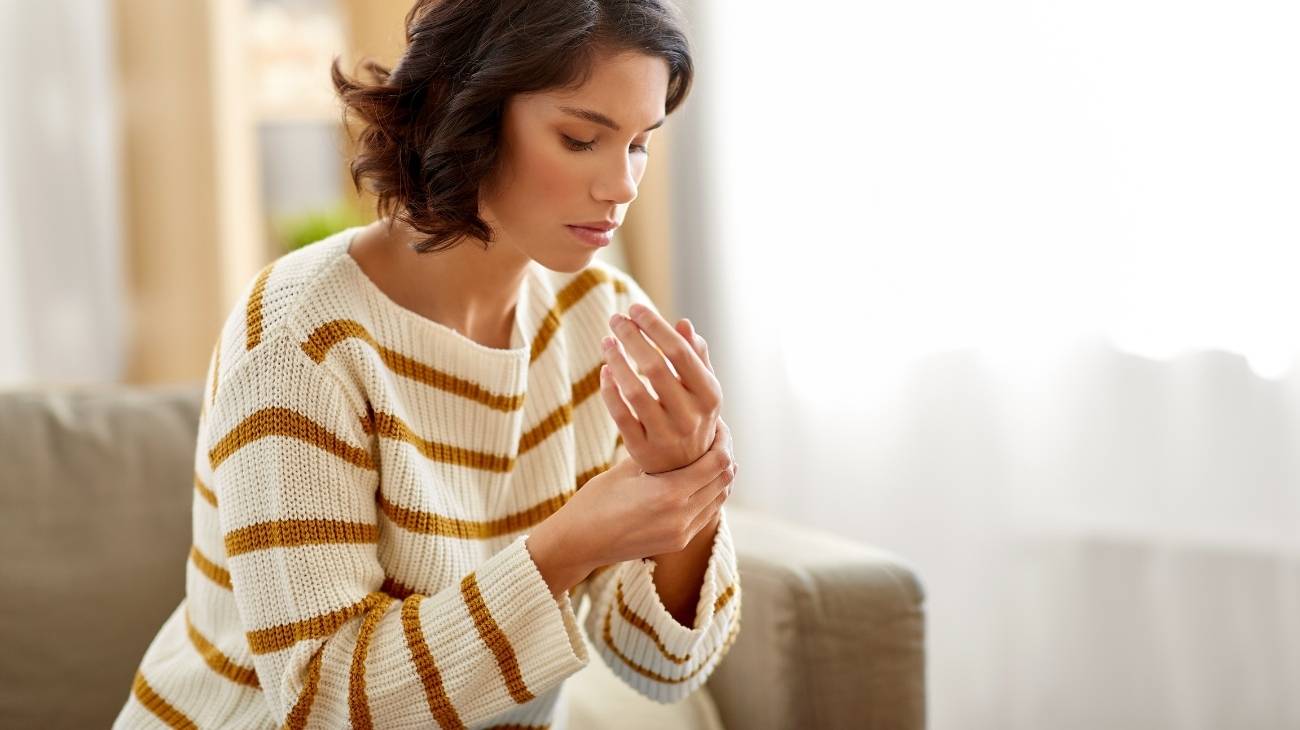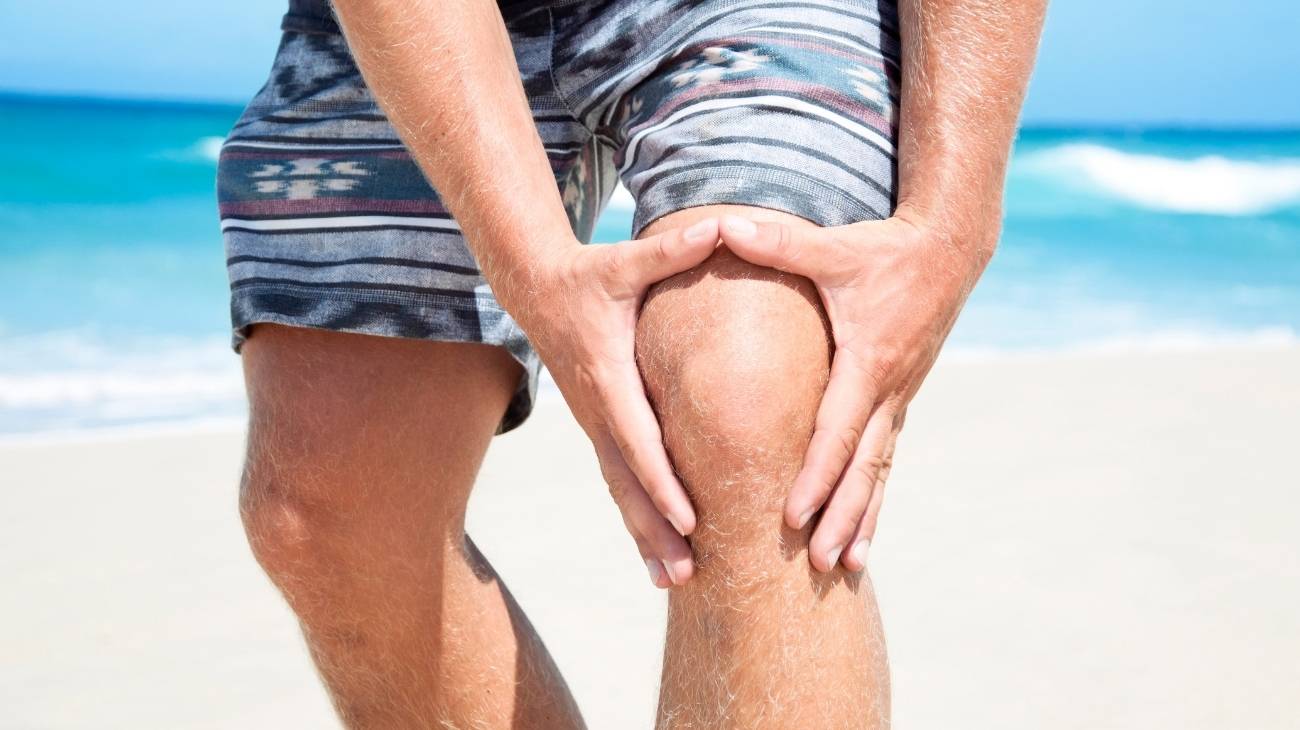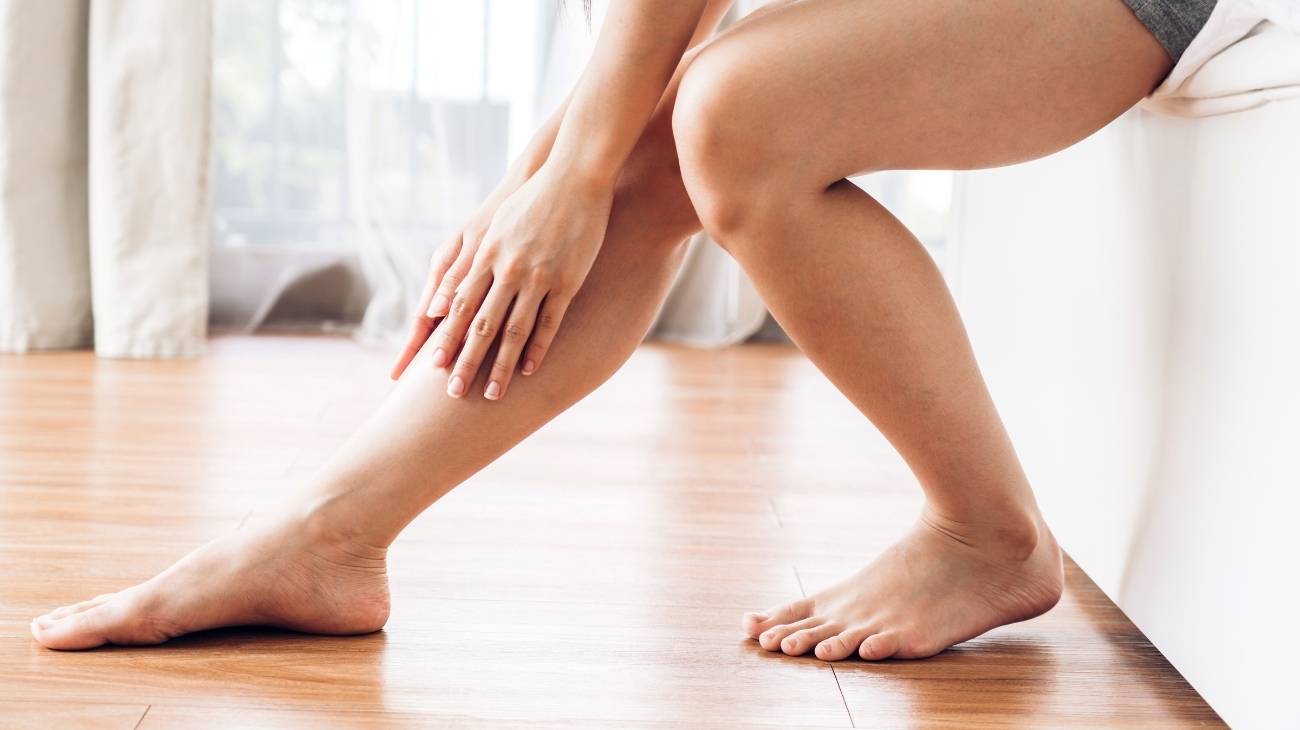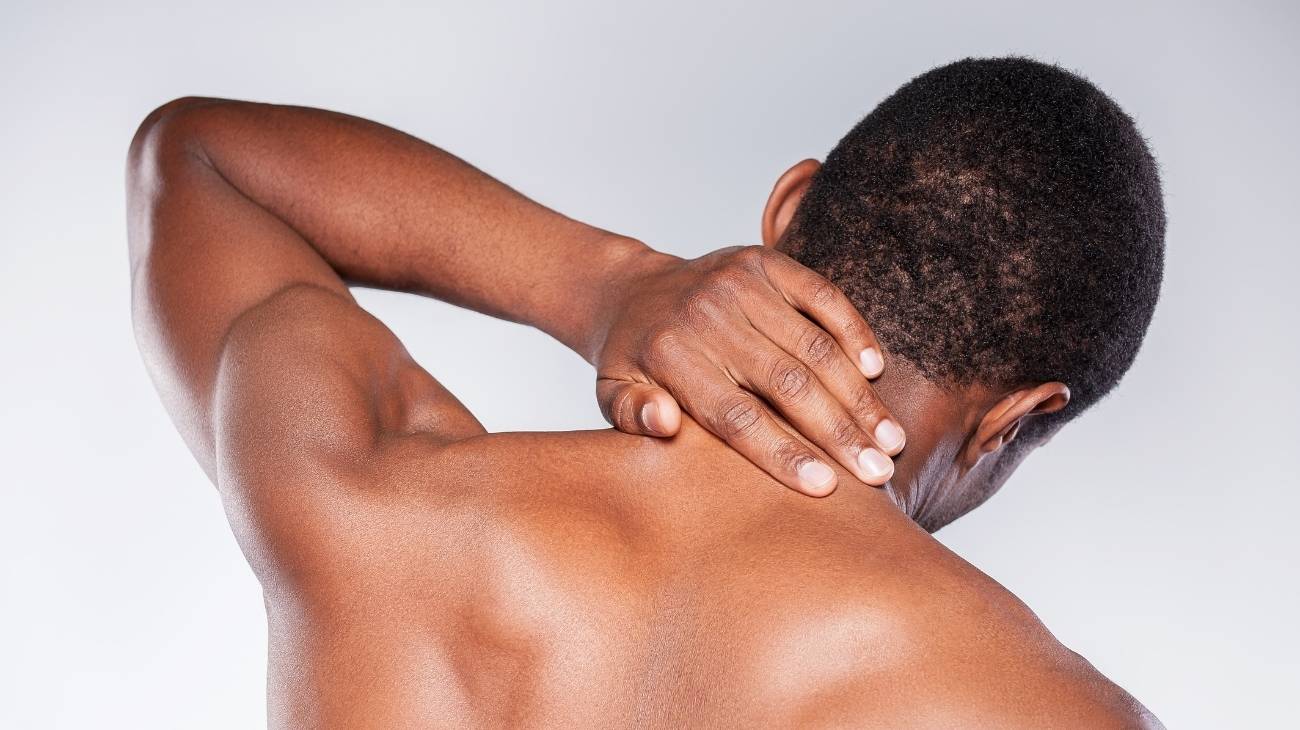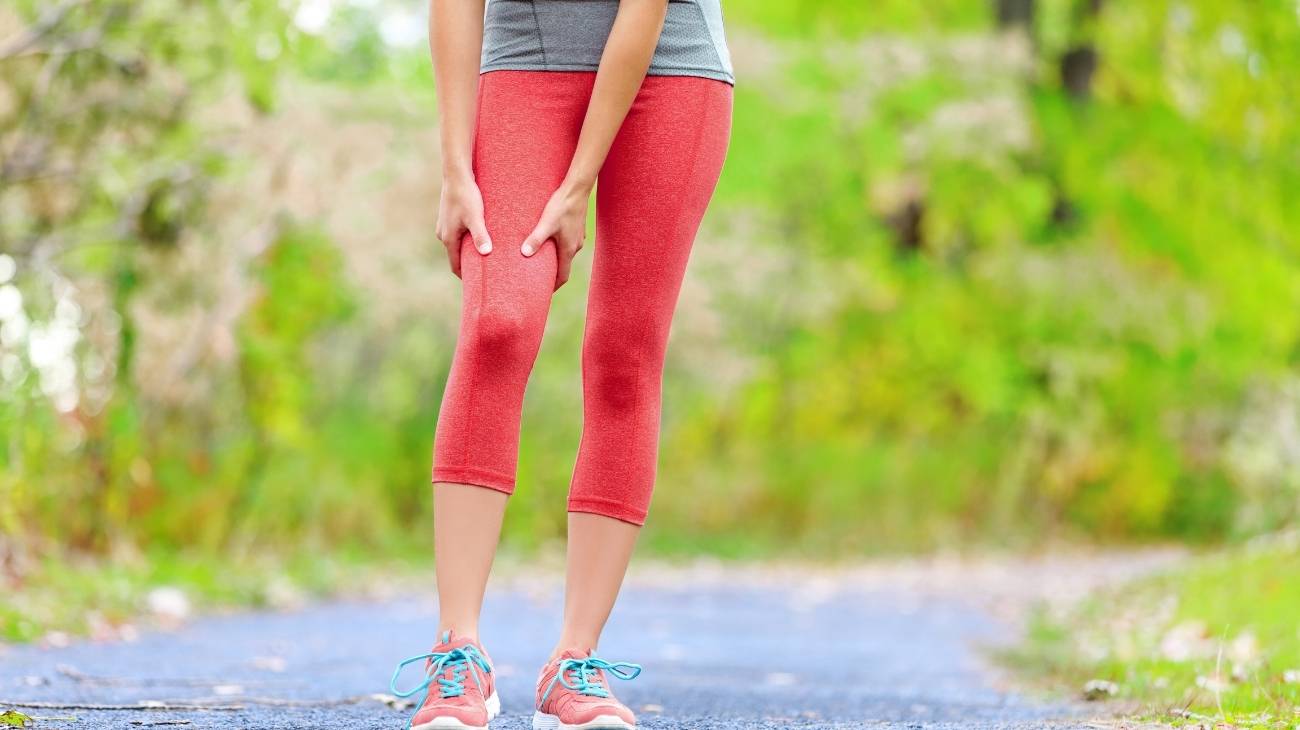- What is ankle pain and how to identify it?
- Best products to relieve ankle pain
- What causes ankle pain and what causes it?
- What kinds of diseases can cause ankle and shin pain?
- What are the symptoms and types of pain that make us think we have an ankle injury?
- How can we relieve ankle and leg pain through complementary and non-invasive therapies?
- How to apply the RICE therapy step by step to reduce ankle and calf pain?
- How to prevent future ankle and leg pain?
- Why should we avoid pills and injections to relieve pain in the ankle area?
Looking for relief from ankle pain? This pain in the instep, the stabbing attacks in the foot bone and the rest of the ailments suffered in this area, can have very different causes. This means that the ways to make it go away are also diverse, although there is a lot we can do to mitigate it.
In addition, we are going to help you better understand how this pain occurs, what causes it, how you can identify and prevent it, how to deal with ankle injuries and much more.
What is ankle pain and how to identify it?
Ankle pain can be either a symptom of an acute or chronic pathology, or simply the result of occasional overexertion. It is a discomfort that can range from mild to really intense and severe in the area immediately above the foot, where there are bony protuberances (the talus and malleolar) surrounded by ligaments. The pain can be in the tissues or directly in the bones of the joint.
Identifying ankle pain is simple because it does not spread to other pain-prone areas. The discomfort will be mainly in the ligaments that hug the ankle, i.e. around the ankle, in the instep and the heel. It is less common, but also possible, for a problem in this joint to cause pain in the rest of the foot.
If the pain is bone pain, you will have difficulty articulating your foot, and may even find that when you move them, the bones rattle (creak). Leaning on the foot may also be difficult, even preventing you from walking. One obvious way to see how far the problem extends is by palpation.
The pain in this area is usually intense if the problem is acute and much more bearable if it is chronic but, obviously, you will always feel discomfort when directly touching the ankle or its surroundings. Swollen and red ankles are another clear way to identify the problem.
Best products to relieve ankle pain
Bestseller
-
2 Ankle Compression Sleeve (Black/Gray)
£17,50 -
2 Ankle Compression Sleeve (Green/Navy)
£17,50 -
2 Ankle Compression Sleeve (Pink/Bordeaux)
£17,50 -
Ice Pack for Foot - Cold Therapy Socks (Black)
£21,95 -
Ice Pack for Foot - Cold Therapy Socks (Green)
£21,95 -
Ice Pack for Foot - Cold Therapy Socks (Pink)
£21,95 -
Microwavable Heated Slippers (Hearts)
£21,50 -
Microwavable Heated Slippers (Oxford)
£21,50 -
Microwavable Heated Slippers (Sport)
£21,50 -
Microwaveable Wheat Bag for Pain Relief (Hearts)
£17,50 -
Microwaveable Wheat Bag for Pain Relief (Oxford)
£17,50 -
Microwaveable Wheat Bag for Pain Relief (Sport)
£17,50 -
Sport Compression Socks (1 Pair) (Black/Gray)
£17,50 -
Sport Compression Socks (1 Pair) (Green/Navy)
£17,50 -
Sport Compression Socks (1 Pair) (Pink/Bordeaux)
£17,50
What causes ankle pain and what causes it?
There are a multitude of factors that can cause pain in the talus and surrounding ligaments. Depending on these, it will be necessary to find an appropriate solution depending on the circumstances.
Trauma, blows and falls
Obviously, a direct blow, falling and leaving weight on the ankle or simply hitting it with something, an object falling on the area, the heel or the instep will produce immediate pain, which is logical and, depending on the severity, more or less prolonged over time. The tissues may become dislocated, the fibres may break or, simply, there may be a resentment in any area due to the impact.
If the cause is obvious, and it is known that it is not a serious problem, the solution can be simple, applying cold and then heat to the affected area.
Pain when running or walking
This can be a symptom of a number of problems or illnesses. Pain when walking is the most common if we suffer from traumatised ankles. Obviously, we will notice more intensity when running. In both cases, as we have said, the range of factors that cause it is immense, from a sprain to bursitis, arthritis, an overload, dislocations, gout, encapsulation, strains due to poor posture or doing sport without warming up properly, etc.
In this case, if you have not recently suffered an accident, it is necessary to investigate the cause beyond the fact of walking or running. This involves a visit to an expert (podiatrist) who can properly diagnose the problem and, depending on this, act accordingly, following an exercise routine, resting, applying heat, massage therapy, etc.
At rest, when resting, resting or getting up
If resting causes pain in the malleolar region, you should probably see a doctor. Although the discomfort is intense in this area, it is unusual if there is no movement; this is an indication that a major problem is occurring. A visit to a hospital should be immediate.
When we stand up we can hurt ourselves for two reasons: we have quite damaged the area and, in effect, it hurts because it must hurt or, alternatively, the area is somewhat resentful and when we stay cold (without moving it for a period of time) we feel the pain more than when we are active (walking, stretching, doing therapeutic exercises, etc.).
This phenomenon is known as plantar fasciitis. If you feel pain every time you put your foot down, this is a case of a very focused injury. Most likely, you are suffering from a scaphoid, scaphoid ligament or heel injury. Injuries with a small, clear focus are usually treated with a compression ankle brace as well as heat and cold when appropriate.
Pain without a sprain
Your ankles may hurt without a recent sprain for many reasons. One reason may be that the pain has become chronic because of a sprain in the past that has not healed properly . Other cases may be due to poor posture, an illness whose symptom is the joint pain itself, or poor handling (e.g. too much massage).
Being overweight or pregnant
Carrying more weight than the ankles are able to bear will make these joints overexert themselves in order to move the body. Any overexertion of our body will cause the affected parts to suffer.
The main thing is to lose weight, or your bones will wear down irreversibly. If you are pregnant, of course, you just have to wait and try not to gain too much weight during the process. In both cases, wearing comfortable shoes, not wearing tight socks (your ankles will be swollen) and soaking your ankles in warm water are very functional and simple tips.
Exercise and strenuous exertion
As in the previous case, overexertion when moving, as can easily happen when doing sport or simply in some professions (warehouse work, construction, etc.), will cause pain caused by tendinitis or easily, by the simple fact of forcing the area more than usual or more than it can withstand (the more exercised it is, the more intensity we can apply in the exercises).
First of all, you should rest. Then, work the area as if it were a sprain, with cold after exercise, rest, moderately compressing the area and keeping it raised when we are resting (apply the RICE therapy).
If you need to continue with your daily activities, you will have to carry out maintenance therapy, so that your tissues and bones do not suffer. When you return to higher intensity training, try to do so with sports equipment, such as wearing a compression ankle brace.
What kinds of diseases can cause ankle and shin pain?
There are many diseases that have as a clear symptom malleolar pain, let's see some of the most common ones:
Arthrosis or osteoarthritis
Although it is not common, osteoarthritis can occur in the ankle. This is the wearing away of the joint surface of the ankle. However, movement is just as limited or even more limited than if you have osteoarthritis of the hip or knee.
The pain occurs in the throat of the foot, pressure is felt and walking becomes more difficult and, as a result, fatigue sets in earlier than usual, to the point of being unable to walk when the wear and tear on the joints is very severe. The joint also becomes stiff and swollen. It can occur as a consequence of previous trauma, osteochondritis and also idiopathic.
It requires the use of orthopaedic accessories such as insoles. The ideal is prevention, some recommendations are to reduce joint impact by wearing compression sportswear, practising less strenuous exercise, doing sports such as cycling or swimming to maintain strength and mobility, etc.
Reactive, psoriatic, septic or rheumatoid arthritis
Arthritis is a disease in which the joints become inflamed. This means that pain in the ankles is the main symptom in its various types. Other symptoms are loss of mobility and, in more obvious cases, bone deformation.
This ailment can occur for various reasons, being also a symptom of other diseases such as gout or psoriasis or infections. It is necessary to look for the disease that causes it and treat it so that the impact of the arthritis is lessened.
Rheumatoid arthritis, on the other hand, is caused by autoimmune problems and can be the most serious, and can even be treated with immunosuppressants and corticosteroids. In general, it is necessary to work on the symptoms themselves (as this disease is difficult to solve), and in the case of pain, the use of heat and exercises are the most indicated resources.
Gout
Special mention should be made of gout, which is another type of arthritis, but complex and much more common in a larger group of individuals. It usually occurs due to an excess of uric acid in the bloodstream, which can be caused by many factors such as diet, obesity, the use of certain drugs, age, recent trauma, genetic conditions, etc.
Its symptoms are a hot, swollen and reddened area, great sensitivity (burning sensation) and intense and sudden joint pain. It usually appears in the first toe (big toe) but can be seen in other joints such as, of course, the ankle. Over time, joint mobility is reduced.
It needs treatment so that the joint does not degenerate with painful episodes, which tend to become increasingly repetitive. Reduce uric acid naturally by taking vitamin C and coffee, reduce alcohol, fructose drinks and purines in your diet and enjoy relaxation sessions (both mental and physical) to ease the pain.
Bursitis
The bursa is the bursa located at the joints of different parts of our body, including, of course, the ankle joint. Its function is to facilitate the movement of the parts.
Bursitis is the inflammation of this structure. The bursa begins to store joint fluid and becomes inflamed. In addition to changing, it stops supplying fluid to the areas that need it. Bursitis can be gouty, rheumatoid or be the result of trauma or a repeated movement.
Inflammation may become visible when it is large, affecting all surrounding tissues, including the dermis. The skin becomes reddened. Other symptoms are joint stiffness and pain both when moving or touching and even at rest.
Fortunately, cases of bursitis diagnosed early have a high rate of recovery or improvement. Rest, cold and protection are essential. Physiotherapeutic exercises, the use of special clothing or accessories among other complementary therapies may also be necessary.
Achilles tendinitis
This condition consists of swelling of the Achilles tendons. It is usually caused by an injury or simply by overexertion. Age also plays a role, as it causes the tissues to lose elasticity (in this case it is often accompanied by tendinosis).
Finally, we find that inflammation of the ankle tendons (Achilles tendon) can be a symptom of certain systemic diseases such as rheumatoid arthritis. The tendon becomes more sensitive and pain occurs (sometimes only at night), which increases with activity. On waking, we feel stiffness in the area.
The only treatment for tendonitis is to return the tissue to its normal state and to reduce pain and swelling. Rest, cryotherapy or thermotherapy and physiotherapy exercises will help you recover quickly. Of course, if the tendonitis has its origin in another problem, this must also be treated. To avoid recurrence, avoid repetitive movements, wear comfortable shoes and pay special attention to warming up before any physical activity.
Osteochondritis dissecans
This is a rather unique joint disease. The ankle is designed in such a way that a bone lies underneath a cartilage. If, for some reason, there is insufficient blood flow to the cartilages, they lose their vitality. If the cartilage becomes detached, the pain in the ankle will be very severe and focused. Obviously, the joint will have reduced movement.
Depending on the degree and age, it may heal on its own or require surgery to remove the cartilage fragment if it becomes embedded in some moving parts. It can lead to osteoarthritis.
Tarsal tunnel syndrome
Also known as posterior tibial neuralgia, it is a picture of pain right in the ankle and also in the foot. It is accompanied by tingling and burning when walking. In an advanced stage, the symptoms can also be felt at rest. It arises due to compression of the nerve enervating the heel and sole of the foot or due to injury (fractures, constant surrounding inflammation, hypothyroidism, heart or kidney failure or even poor posture).
This is not a temporary problem and it is not easy to cure. Injections and even surgery may be necessary. The use of orthoses both to treat the disease and to improve the quality of life when there is no solution is very common. To relieve pain, contrast therapies, applying heat and cold alternately.
Degenerative or chronic diseases
There are several chronic and degenerative diseases that cause ankle pain. As we have seen, this can happen for many reasons, not just injury. Of course, these diseases can be caused by the effects they have on our organism (blood flow problems, tissue inflammation, lack of synovial fluid and many others).
Sprains and fractures
These are not considered diseases as such, but they are the main pathologies that cause ankle pain. They are caused by accidents (falls, blows, overexertion, etc.) or by the normal use of the joints when they are weakened or affected by other problems.
In these cases, apply the RICE therapy first (24-72 hours) and continue, when we are no longer in the acute phase, with thermotherapy. In the event of a fracture, the area will also be immobilised by medical professionals, so your visit to the hospital is obligatory.
If there are no bone problems, there are different types of massages that will also serve to relax the area, soften the tissues, reposition them and improve mobility.
What are the symptoms and types of pain that make us think we have an ankle injury?
Ankle injuries can be spotted very easily. Although, as we have seen, ankle pain can be caused by disease, injuries are the most obvious and knowing the symptoms is simple.
Most common types of symptoms
Let's look at the symptoms that generally occur when we have ankle pain:
- Pain: Pain due to injury is continuous, of greater intensity when walking too much and when getting up after being immobile for a period of time. Obviously, it will depend on the type of injury and the stage of the injury. Rarely will there be sudden, intermittent episodes (this is typical of neurological diseases and others such as gout) but the pain will be gradual and will remain, more or less intense, over time while the sprain, dislocation or fracture heals.
- Stiffness: Stiffness occurs in injuries if bursitis or tendonitis occurs as a result. If this is not the case, a conventional injury should not cause stiffness.
- Swelling: Obviously, swelling will accompany ankle pain when the ankle is injured. This is very common with even the smallest bruises, so it would be rare not to notice swelling in the area. The tissues and/or bones, altered, become inflamed by both hitting them and twisting them. Unfortunately, it is also a symptom of many other ailments, so it is necessary to check the rest of the symptoms to rule out and make a correct diagnosis.
- Redness: This accompanies the swelling and occurs when the swelling is very evident, due to heating of the area.
- Increased temperature: This is also caused by the swelling of the area, due to the aggression. It is very uncommon in problems other than injuries.
- Burning: Burning appears in a very specific way. It is a symptom of gout, but it also occurs in the case of tarsal tunnel syndrome, which we could consider a repetitive injury pathology.
- Numbness: This usually occurs because we move less when we are injured. It is normal for us to find it difficult to move our feet, and we may feel nothing at first or feel tingling. In addition, our movements will be clumsy until the injury passes. In any case, getting hurt (any injury) or compressing the nerves, as happens in the case of tarsal tunnel syndrome, can cause this symptom.
- Haematoma: This usually appears if we have suffered a sprain and tissues on which veins or arteries rest have been affected. If the event has been very strong, the simple aggression on the skin can also cause bruising by traction.
- Joint instability: As in the previous case, it is the modification of the ligaments of the ankle, due to sprains and other types of twisting or crushing actions, which would cause instability in the joint. The ligaments are unable to perform their supporting function.
- Reduced movement: An injury is not the primary cause of reduced joint movement. It is if, because of pain, we are the ones who stop moving, disinhabiting the area, but we have the ability to do so.
Types of symptoms depending on the area
Now, let's define where, how and why symptoms appear in the different areas that relate to the ankle:
- Inner side: If you are a pronator, not just any injury but simple activity can cause you to suffer from pain and inflammation on the inner side of the ankle. Obviously, a fracture of the bones in the area or an involuntary repositioning of the bones due to a blow will cause the area to swell, and the talus may even be concealed. This area will be stiff if you suffer from bursitis, as the retrocalcaneal bursa is located on the inside of the ankle, behind the talus. Although it may have another origin, trauma can also cause this condition.
- Outside: On the outside of your ankle, the malleolus is prominently located. For this reason, it is normal that it receives a lot of aggressions and can suffer, crack and even fracture. Thus, we will be able to notice almost any of the symptoms of ankle pain: pain, bruising, redness, huge swelling, great joint instability...
- Instep of the foot: The instep, affected by an injury, will suffer from pain, swelling, increased temperature, redness, numbness, numbness and bruising. These will be more evident if we have also suffered aggression in this area as well as in the ankle itself, but even if this is not the case, the instep also suffers a great deal from a malleolar injury.
- Heel: Symptoms in the heel are uncommon. Usually we only feel pain, constant in cases where this has suffered the main aggression in the area or temporary when mobilising. This will be felt if we suffer from tendonitis in the Achilles tendon and in the case of suffering from tarsal tunnel syndrome, as it is precisely the nerve that supplies the heel that has been injured or compressed.
How can we relieve ankle and leg pain through complementary and non-invasive therapies?
We have already seen that many of the factors that cause ankle pain are diseases that require their own treatment. In this post, we tell you how to relieve ankle pain, which is a consequence or symptom, using simple, non-invasive and effective therapies so that you don't have to resort to drugs.
Compression therapy
This therapy is not very common as it is only suitable in a few cases: suffering from venous diseases, if the malleolar pain is caused by osteochondritis dissecans, if there has been an erroneous distension of the tissues or if these must be repositioned and maintained.
After the diagnosis is made, it is determined how the compression should be applied, including the amount of pressure, the area to be covered and the type of material to be used. Compression ankle braces and flexible splints are generally used.
The aim is to keep the area as neutral as possible, without exaggerated movements that could impair healing. Compression garments are helpful in reducing swelling and maintaining tone.
Massage therapy
Massage is used if the pain moves up the legs, also to treat the tissues of the instep, which may have atrophied or become excessively distended. There are many types of massage, so the most appropriate one (according to an expert) will be chosen in each specific case, depending on the affected area and considering the objectives.
How it is carried out varies as much as the type of massage chosen, although a series of movements are repeated. The most common massage movements include pressure, gliding, kneading, friction, percussion, etc. Each of these has its own benefits, so it is important to know which ones to choose for each session.
Acupressure therapy
Acupressure involves pressing points on the body that act as switches to treat ankle pain. There are five points that can be used to treat this area:
- Gall bladder 34 (pecking 30 seconds)
- Stomach 44 (sustained pressure 60 seconds)
- Bladder 60 (sustained pressure 60 seconds)
- Bladder 62 (digital rubbing 60 seconds)
- Stomach 41 (manipulation 300 seconds, including rubbing and pressure)
They are worked in the order listed twice a day, as long as we are in the acute phase of the pain.
Thermotherapy
We will apply heat if our legs, ankles or feet hurt as long as the pain is not acute. This means that if we have just suffered a blow, a fall or have any injury, we should allow at least three days to pass before resorting to thermotherapy.
After 72 hours, the use of heat therapy is recommended. It is also recommended when the pain is chronic or is caused by diseases such as arthrosis, gout and arthritis in general, etc.
We choose a heating element (preferably a thermal pillow for microwaves) and place it on the painful area. This can be done for 15-20 minutes when the pain is at its worst. We can also take hot baths or use steam baths or saunas. Never use a heating element that is above 58º C.
Cryotherapy
On the other hand, we can use cold when we feel pain in the ankle, foot or leg immediately after suffering a trauma (a blow, a fall, dislocation of the area, something falling on us, etc.). The low temperature will numb the area by affecting the nervous system and will reduce the blood flow, trying to avoid excessive and very painful inflammation. Cold is an ideal and 100% natural analgesic with no side effects.
Cold should be applied (preferably with a ice gel pack) or immersion of the ankle when the pain is acute, i.e. within hours of the pain occurring (swimming in a pool is a very good remedy for this joint).
Cryotherapy should not be used recurrently, a maximum of 6 times a day (if the sessions are short) or 4 times a day if they are longer, and never more than 25 minutes (10 minutes if the temperature is very low or even 2 minutes if we are talking about immersions).
We do not use cold if the pain is chronic, recurrent or caused by another illness.
Hot and cold therapy
This therapy can be used if the pain we feel is caused by rheumatic diseases. It is a two-pronged approach to the pain. It is also useful if we suffer from tarsal tunnel syndrome, as the contrast therapy helps to sensitise the nervous system.
Finally, it is also recommended to cleanse the tissues, for example, if we suffer from oedema or bursitis. We have to expose the area to intervals in minutes of alternating heat and cold. We can do this with immersions, in hot or cold saunas or by direct contact with solids such as cold gels, wrapped ice, compresses, thermal pillows, etc.
Other effective alternative therapies
Some other ways we have to reduce joint pain in the ankle are:
- Natural remedies using plants: You have four basic and very effective plants to work on malleolar pain. Arnica, in plasters, infusion baths or rubs, is the best plant-type anti-inflammatory, as well as having analgesic properties. Comfrey is recommended in cases of bursitis and tendonitis. Wintergreen works directly on pain of neuralgic origin, especially if you have tarsal tunnel syndrome. Finally, common capsicum is very useful if you suffer from joint inflammation or tendonitis. It reduces inflammation and pain and helps to relax the area.
- Acupuncture: It works in the same way as acupressure, but in this case we do not press with our fingers but place thin needles in them, which cause a direct reaction in the painful area. Depending on the points worked, healing is improved and healing times are reduced.
- Kinesiotherapy: This therapy is especially indicated for muscular pathologies, it can help us, in this case, if we have lost range of movement, as the different exercises will help us to recover it and, in general, to maintain its functionality. It will also be useful in cases of joint stiffness: bursitis, tendinitis, arthrosis, etc.
- Osteopathy: This will be applied if there is no fracture but if we need to improve joint mobility, to get more blood to the area or to reduce stiffness.
- Ultrasound: Designed to improve comfort in joints resented by recurring problems through the use of sound waves.
How to apply the RICE therapy step by step to reduce ankle and calf pain?
The RICE therapy is well known in the world of sports and physiotherapy because it is used primarily to begin to treat many injuries effectively, reducing pain and inflammation. This was followed by the PRICE therapy, identical but with a previous protective step, which is the most recommended method.
- Protection: Protection includes everything from positioning ourselves in a suitable place to apply the step-by-step to cleaning the area and securing it properly with a bandage or tourniquet.
- Rest: All injuries require more or less relative rest. Unless we have a very serious fracture, we should not stop all activity (we could suffer stiffness), but we should try not to exert ourselves, walk slowly, support ourselves adequately and dedicate a few hours a day to rest as such.
- Ice: To reduce the acute swelling and pain of an ankle injury, we should apply cold. Cryotherapy can be done suddenly with a bit of ice wrapped in a cloth, although it is ideal to have specific elements for this purpose such as cold gel packs, cold compresses, etc. They are placed on the area for a few minutes without stopping moving so as not to cause adverse effects.
- Compression: Compression ankle braces and an elastic bandage on the ankle will help to keep the swelling at bay as well as keeping the tissues and bones in place, facilitating recovery.
- Elevation: When resting, try to keep your ankle elevated above your heart. This will prevent too much blood flow (which promotes swelling).
How to prevent future ankle and leg pain?
Undoubtedly, ankle and leg pain should not be with us all our lives. There are many things you can do to relieve ankle, foot and even leg pain before it happens. Prevention is the best cure.
- Footwear: Whenever possible, wear comfortable shoes. For sports, buy sports shoes according to the activity you are doing, always soft and flexible and with cushioning capacity.
- Compressive clothings: If you do a lot of sport or your pain is already chronic, opt for compressive garments, which make it difficult for the bones and tissues to change, keeping them in place.
- Adequate physical activity: If you are often suffering from this condition, it is possible that your sporting activity is incorrect. This may include both the type of exercise you do and its intensity, which should be adapted to the different times you are doing it, according to your capabilities. Also, make sure you use appropriate clothing and materials for each activity.
- Preparation for the activity: Another point is that, before doing sport, you should prepare yourself properly. Stretching to warm up your leg muscles and joint rotations to work bones and tissues are essential.
- Overexertion: Stop any activity that puts too much strain on the area. Change posture, alternate activities and, if needed, use a support point to take weight off your ankles.
- Rest: Try to rest the area both regularly if you suffer from recurrent pain and intermittently during continuous exertion or even during a long walk.
- Heat/cold therapy: These nourish and cleanse the tissues, reduce focused pain and normalise nerve plasticity and sensitivity. By applying heat and cold in immersions or with therapeutic elements of this type before and after activities and also for pleasure, you will ensure that the area does not become vitiated and that it always remains in good condition.
- Thermotherapy: If you are prone to pain due to sequelae or illness, don't hesitate to enjoy heat from time to time by applying it to the ankle, foot or leg or by immersing them in hot water or exposing them to steam. It is comforting and allows the tissues to relax.
- Diet: If your ankles tend to swell, start by reducing your salt intake. Eat plenty of protein to keep the tissues nourished and avoid being overweight so that the joint doesn't suffer by drinking plenty of water and avoiding saturated fats, processed products, etc.
- Specific exercises: There are strengthening exercises (if you have been injured before or often suffer from pain), preparation exercises (when getting up or before doing a specific activity) and maintenance exercises (to avoid weakness and stiffness). They are simple and, once you have discussed them with an expert, you can do them at home.
Why should we avoid pills and injections to relieve pain in the ankle area?
The first and foremost reason why this is not a good idea is because self-medication can be dangerous. Drugs can already have contraindications that we are not aware of, even the most basic ones.
Furthermore, even if we do not suffer from these effects, every drug has side effects that we will surely suffer in the medium or long term, in addition to those related to the ingestion of the components themselves.
There are already different techniques that will help us considerably to reduce ankle pain without the need to take chemicals. Ideally, medication should be reserved for treating the cause of the pain and not the pain itself. If your ankles hurt a lot, first of all, go to a medical professional who will diagnose your problem, refer you to a specialist if necessary, who will prescribe a personalised treatment according to the diagnosis.
References
- Thomas, M. J., Roddy, E., Zhang, W., Menz, H. B., Hannan, M. T., & Peat, G. M. (2011). The population prevalence of foot and ankle pain in middle and old age: a systematic review. Pain, 152(12), 2870-2880. https://www.sciencedirect.com/science/article/abs/pii/S0304395911005616
- Van Dijk, C. N., Bossuyt, P. M. M., & Marti, R. K. (1996). Medial ankle pain after lateral ligament rupture. The Journal of bone and joint surgery. British volume, 78(4), 562-567. https://online.boneandjoint.org.uk/doi/abs/10.1302/0301-620X.78B4.0780562
- Biedert, R. (1991). Anterior ankle pain in sports medicine: aetiology and indications for arthroscopy. Archives of orthopaedic and trauma surgery, 110, 293-297. https://link.springer.com/article/10.1007/BF00443461
- Luk, P., Thordarson, D., & Charlton, T. (2013). Evaluation and management of posterior ankle pain in dancers. Journal of Dance Medicine & Science, 17(2), 79-83. https://www.ingentaconnect.com/content/jmrp/jdms/2013/00000017/00000002/art00005
- Kelikian, A. S., & Sarrafian, S. K. (Eds.). (2011). Sarrafian’s anatomy of the foot and ankle: descriptive, topographic, functional. Lippincott Williams & Wilkins. https://books.google.es/books?hl=en&lr=&id=I8h6bDR0SLMC
- Golanó, P., Vega, J., De Leeuw, P. A., Malagelada, F., Manzanares, M. C., Götzens, V., & Van Dijk, C. N. (2010). Anatomy of the ankle ligaments: a pictorial essay. Knee Surgery, Sports Traumatology, Arthroscopy, 18(5), 557-569. https://link.springer.com/article/10.1007/s00167-010-1100-x
- Brockett, C. L., & Chapman, G. J. (2016). Biomechanics of the ankle. Orthopaedics and trauma, 30(3), 232-238. https://www.sciencedirect.com/science/article/pii/S1877132716300483
- Riegger, C. L. (1988). Anatomy of the ankle and foot. Physical therapy, 68(12), 1802-1814. https://academic.oup.com/ptj/article-abstract/68/12/1802/2728302
- Tropp, H. (2002). Commentary: functional ankle instability revisited. Journal of athletic training, 37(4), 512. https://www.ncbi.nlm.nih.gov/pmc/articles/PMC164386/
- Melham, T. J., Sevier, T. L., Malnofski, M. J., Wilson, J. K., & Helfst Jr, R. H. (1998). Chronic ankle pain and fibrosis successfully treated with a new noninvasive augmented soft tissue mobilization technique (ASTM): a case report. Medicine and science in sports and exercise, 30(6), 801-804. https://europepmc.org/article/med/9624634

